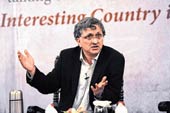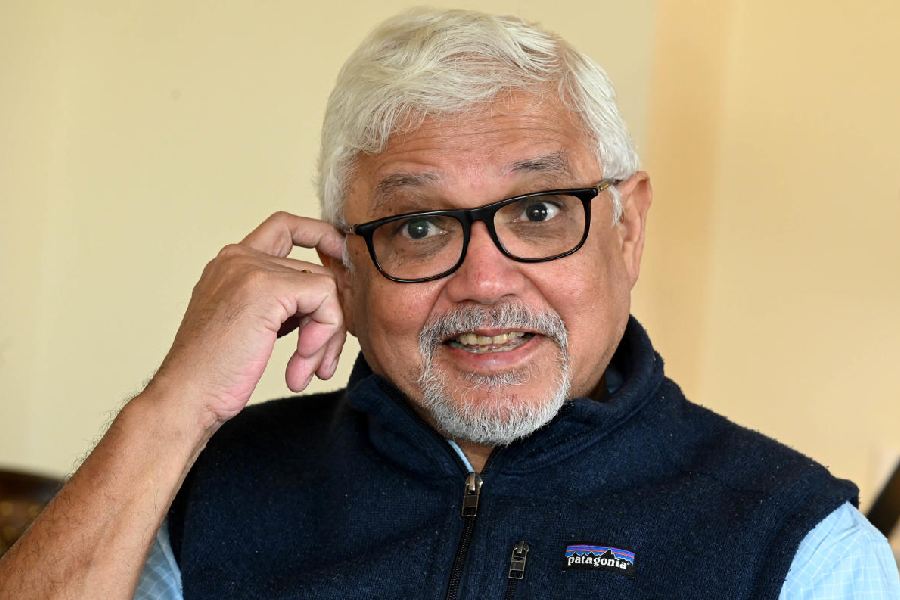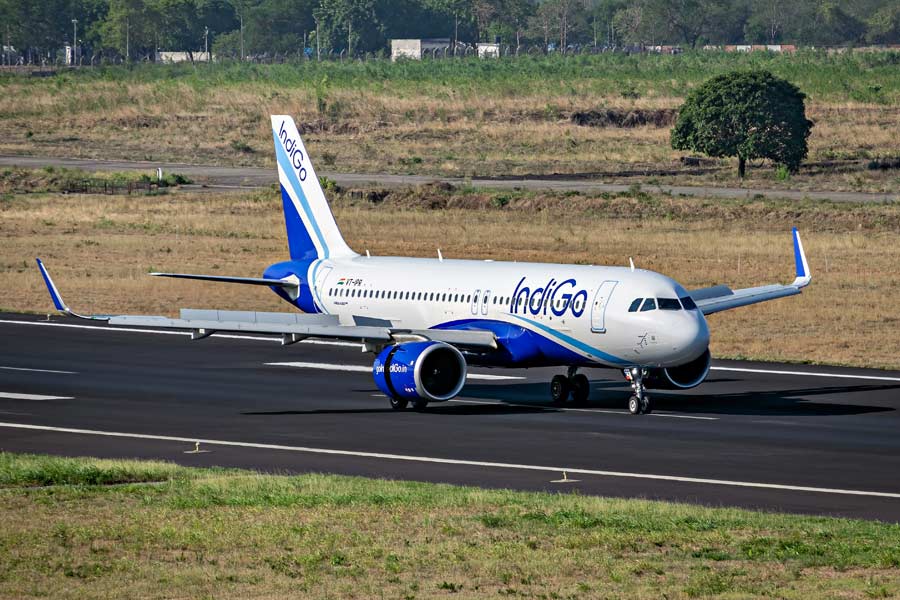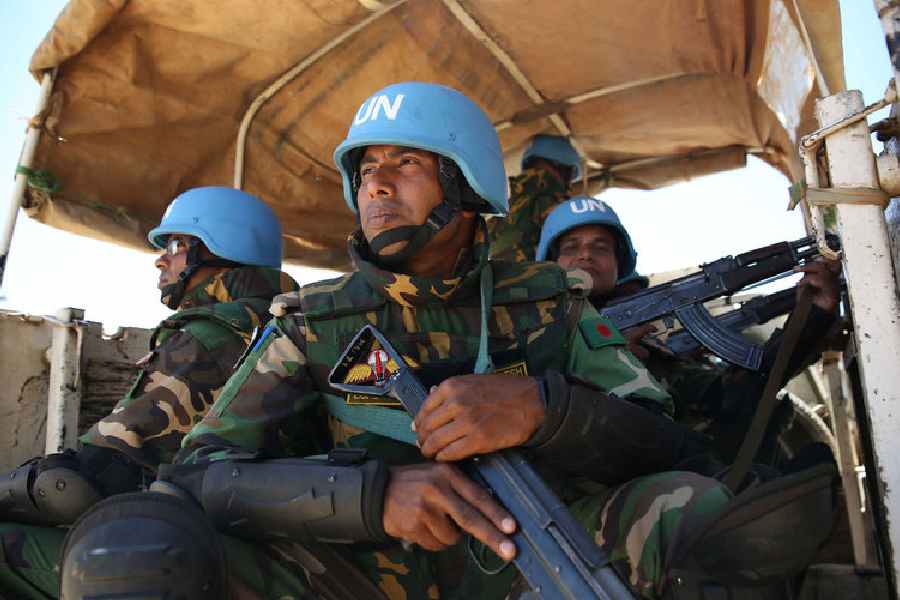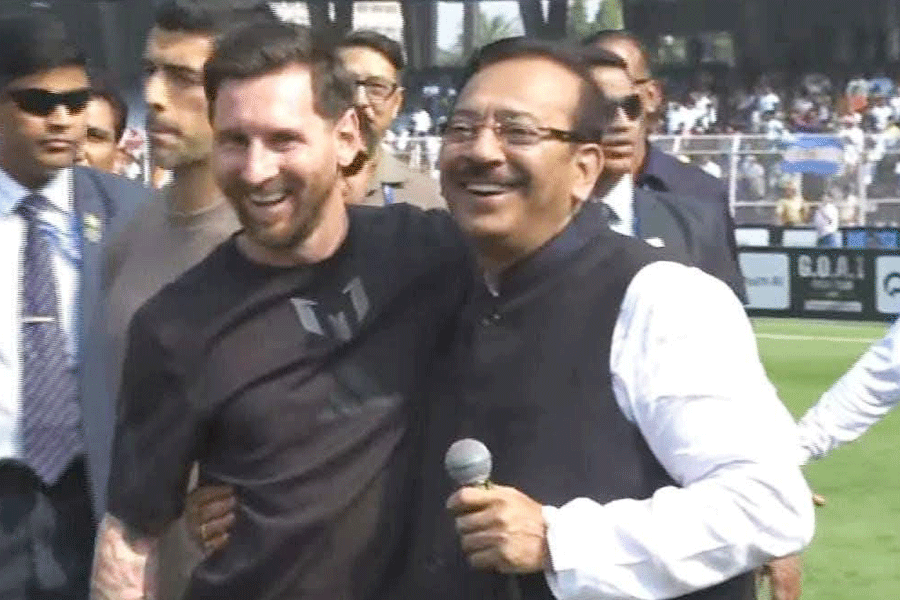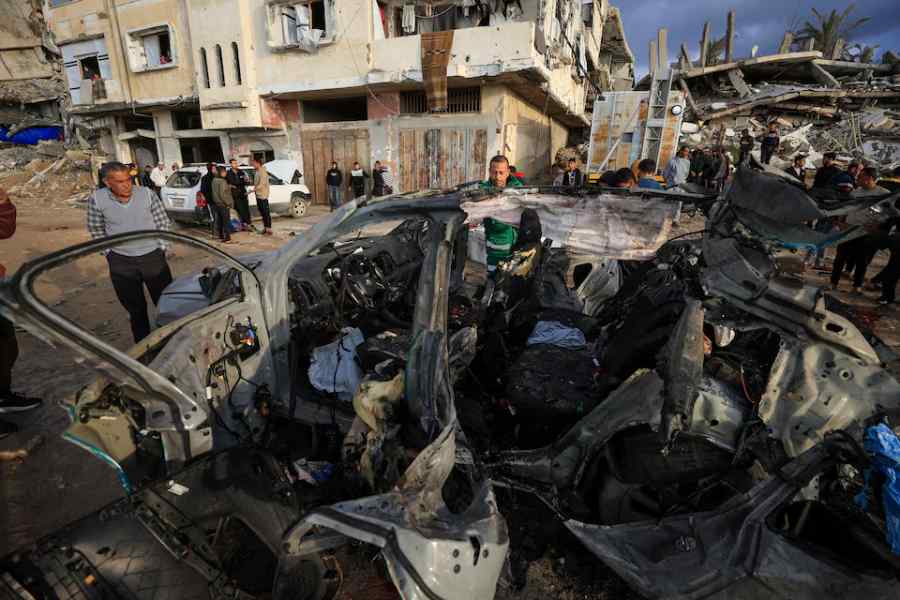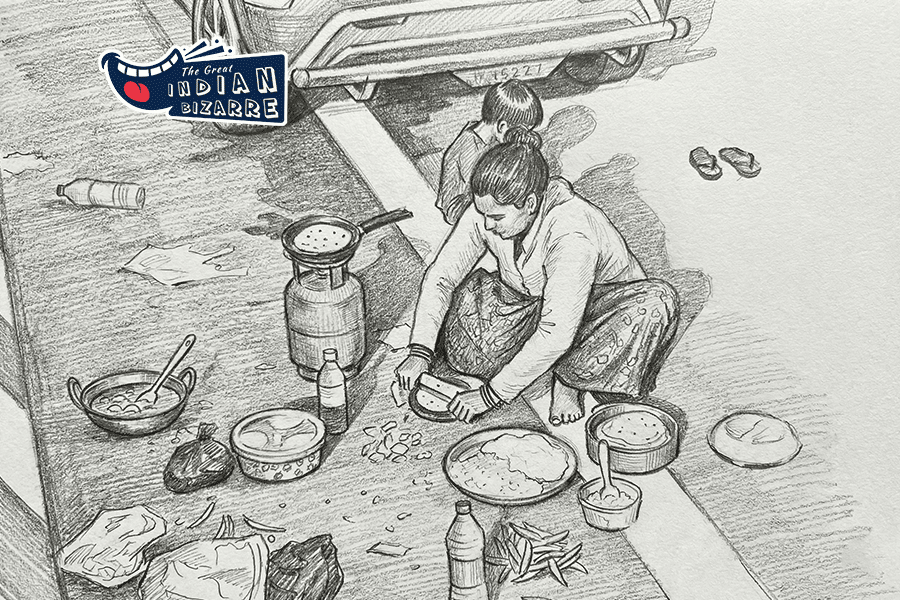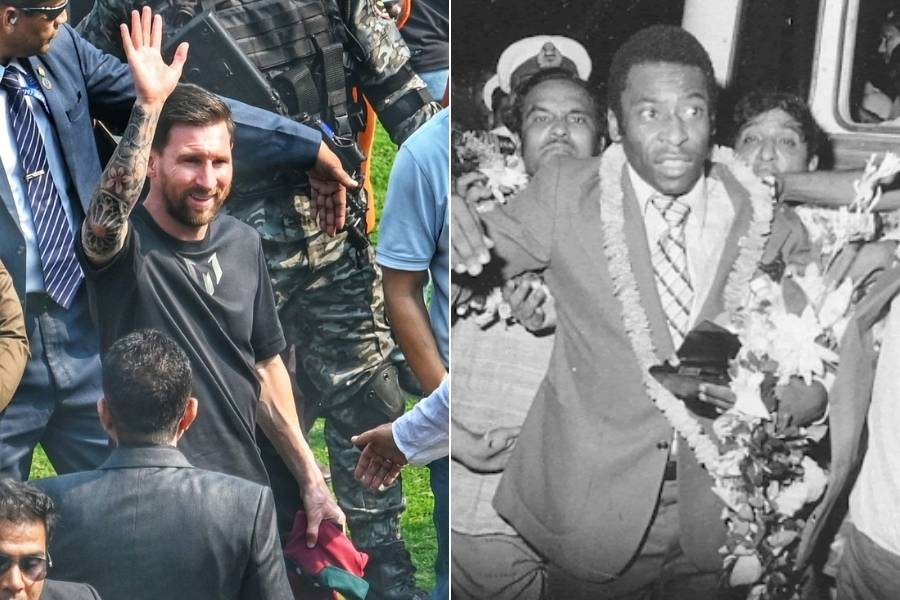 |
| Ramachandra Guha at the Calcutta launch of his book Makers of Modern India recently. Picture by Pradip Sanyal |
Political commentator, sociologist, teacher, cricket expert, environmentalist… Ramachandra Guha wears many hats and more. Metro caught up with the salt-and-pepper-haired historian recently on the sidelines of the Calcutta launch of his latest book, Makers of Modern India
This book has kind of three provocations. I was teaching a course some 15 years ago on Gandhi at Berkeley and that was the time I started reading seriously about Gandhi and his contemporaries — Nehru, Tagore, Ambedkar.
Then when I was working on my book India After Gandhi, I realised that Nehru was just as interesting a figure in post-Independence India, around whom lots of debate is clustered. Like Gandhi, what was special about Nehru was that he was open to debate and arguments.
Unlike many post-colonial leaders, they never identified themselves with the nation: Castro is Cuba, Ho Chi Minh is Vietnam, Mao is China. But Nehru and Gandhi were democrats. They knew their understanding of the world was imperfect, flawed, incomplete…. Of course they had ideals, values and hopes for India. This got me interested in the history of ideas.
The third and final provocation was a debate I had with Amartya Sen in the pages of Economic & Political Weekly on the roots of our political tradition. Sen seemed to think that our democracy and constitutional ideas were determined far more by much older traditions, such as we associate with the Buddhists and Ashoka, while I felt it was a modern phenomenon that started with Rammohan Roy.
So I thought let me explore the history of political debates and ideas in India in the last 200 years that shaped the making of our nation.
What are your expectations from the readers of this book?
This book is meant for everyone... I would want all Indian citizens who are interested in the roots of our democracy to pick up this book. It is not only for an academic audience. At the same time, while it would be good to educate Indians about their history of ideas, one would also want to make India more central to global debate, given that India never really figures in global debates on democracy, nationalism or multi-culturalism.
You have included Rabindranath Tagore as one of the makers of modern India. In his 150th year, when the Tagore tag is everywhere in Bengal, do you think we need to revisit Rabindranath in a way that he’s actually relevant today and not just a name that we drop?
Tagore is everywhere because that is the kind of enduring importance certain kind of thinkers have. But Tagore should not be remembered just on his 150th anniversary. Tagore is here in this book as a political thinker; not as a poet, composer, novelist or playwright. His work in political thought is getting more and more appreciated now. He had a profound influence on Gandhi and Nehru.
It is very important to take Tagore out of the Bengali context. Even if people have taken Tagore out of the Bengali context, they’ve shown him as an international figure, they haven’t explored his relationship with the rest of India. Bengalis forget this. Bengalis think either Tagore is Bengali or a world figure, not so much an Indian. But Tagore had travelled to different parts of India, interacted with various Indians….
One of the aims of this book is to take people out of their parochial contexts, so that Ambedkar is not only for the Dalits, Nehru not only for the Congress party and Tagore not just for Bengalis. They are saying things of much wider importance.
Also, I feel the best way to revisit a thinker is to engage with his writings. Tagore’s writings must be made available and accessible to a wider range of people. There are many good translations in English now. There should be translations in other languages too.
During his time, why do you think Tagore was not recognised as a political thinker?
There was so much to Tagore. Gandhi also. For example, Gandhi’s relevance as an environmental thinker. Gandhi and Tagore were such protean figures. I call Tagore a “rooted cosmopolitan”, someone who was open to outside ideas but not ashamed of his own tradition.
While you have included Tagore, who was less known for his political thought, you have left out Subhas Bose and Vivekananda from this volume…
This is one book, 550 pages. And as I have said in the book, there would be grumbles about omissions from every corner of India. In Chennai they are asking me why I have left out Annadurai, in Calcutta you are asking about Netaji and Vivekananda. But I look at this book as a start, as an attempt to open a debate on the history of ideas. It should lead to, say, a Makers of Modern Bengal or a Makers of Modern Maharashtra by others.
Do you think Tagore was a greater proponent of non-violence than Gandhi in some ways?
I think Tagore burnt his fingers in the Swadeshi movement. Being a writer, he was very wary of associating himself either with the government or with the popular protest. That way, a writer loses his objectivity. That is an example today’s writers and even artistes should follow. There are writers and artistes who have openly sided with Mamata Banerjee, there are others who are seen inaugurating film societies with the chief minister. I think this is completely wrong. The writer must maintain his distance or else his independence will be compromised. As far as Gandhi and Tagore go, one was a political activist, the other a writer. Both influenced each other, inspired each other. But their roles were separate.
How do you look back at your Calcutta connection?
I did my doctoral studies at the Indian Institute of Management. Though I stayed in Joka, I would visit the city every week. I know the city quite well. My first job was at the Centre for Studies in Social Sciences, which was in Lake Terrace then. I have a very intense love-and-hate relationship with Calcutta. I have reservations about some colloquial, parochial aspects of the bhadralok society but I love the way Bengalis engage in debate. I grew up intellectually in Bengal, having done my PhD here and so Calcutta is very special to me. It’s an old bond, an old affection.
In one of your columns for The Telegraph, you have mentioned visiting the South Park Street cemetery, which is now drawing visitors following the release of Sandip Ray’s latest Feluda film Gorosthanay Sabdhaan…
I had gone to the South Park Street cemetery to look for the grave of CF Andrews. I finally found it in the Lower Circular Road cemetery. It is great if popular films can get people interested in the built heritage of their city. Calcutta still has a lot of its historical buildings, unlike Bangalore, that has changed too much. I can’t recognise the Bangalore of my boyhood.
Does that mean that Calcutta — and its skyline — is stagnating?
I don’t think it was necessary for Bangalore to destroy its old architecture to make way for modernity. Look at London, Paris — have they obliterated their built history while becoming modern cities?
And Calcutta has so much history. The city manages to surprise me ever so often. The other night I was taking a drive around town and suddenly reached a small gully in Bhowanipore. Right in the middle of a small crossroads was the bust of Indira Gandhi. Now, there are statues of Gandhi and Tagore everywhere, but not Indira. It must be something to do with the Bangladesh war and the influx of refugees into Bengal, I concluded.
Then I was walking down Chowringhee and was fascinated to find that No. 1 Chowringhee is a shop selling guns. It seems so fitting, given that Calcutta was the capital of the British empire. And the shop dates back to the colonial times!
Bengal is on the cusp of change. What are your thoughts on the political churn the state is going through?
I think it is unhealthy for any party to stay in power for 33 years. It is unhealthy for the state, it’s unhealthy for the party. There are a lot of questions about what kind of governance the Trinamul will provide, whether they are suited to govern or not or even about their leadership. There is Mamata Banerjee and then no one else. We don’t know anything about a second rung of leadership in the Trinamul. But even then, the change is necessary. Even if the CPM comes back, it will be a less arrogant CPM. The change in leadership should have happened 10 years ago.
Before the draw of stumps, how would you describe Bengal’s situation in cricketing parlance?
I’d have to say that it’s time that one side declared and the other team got a chance.

